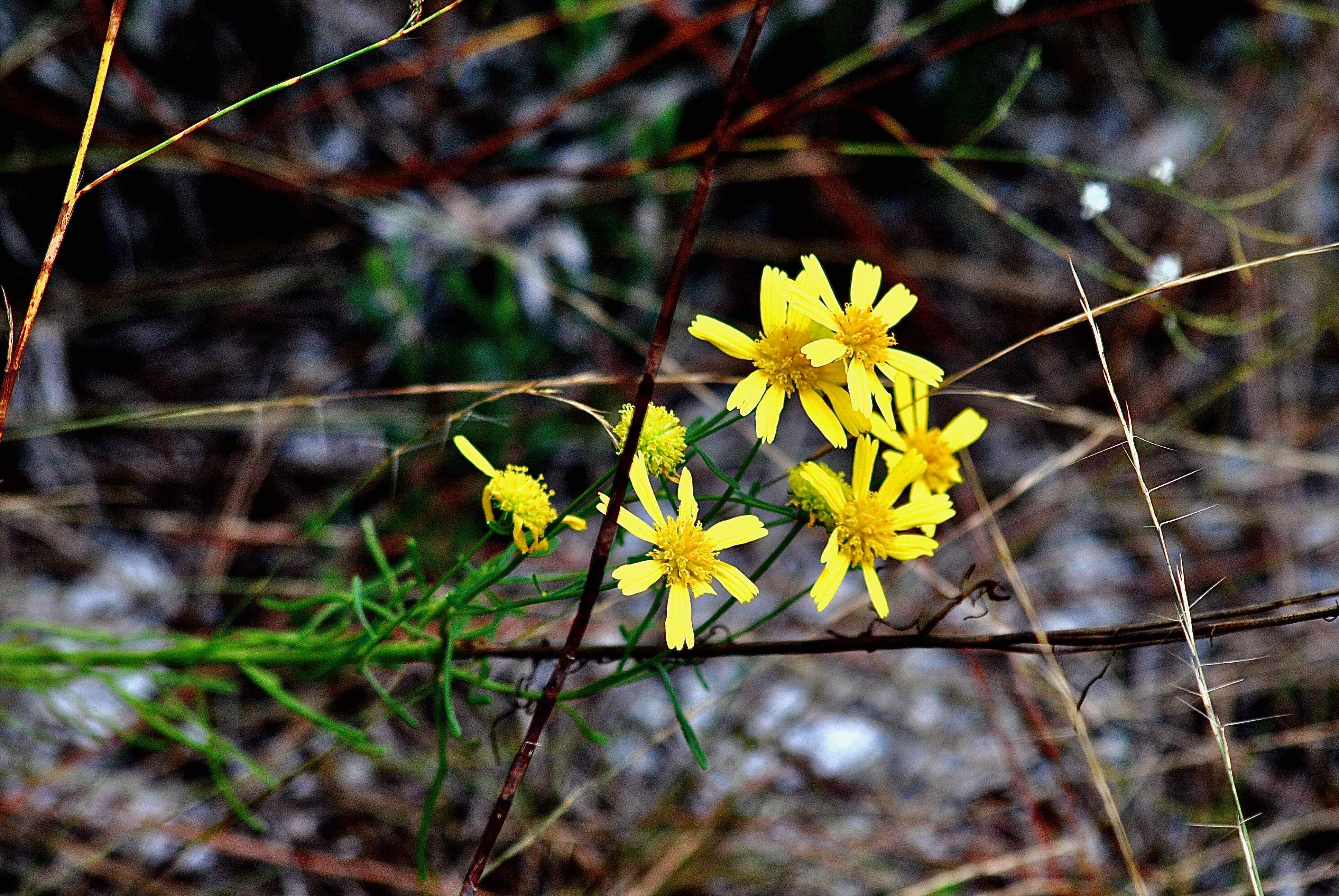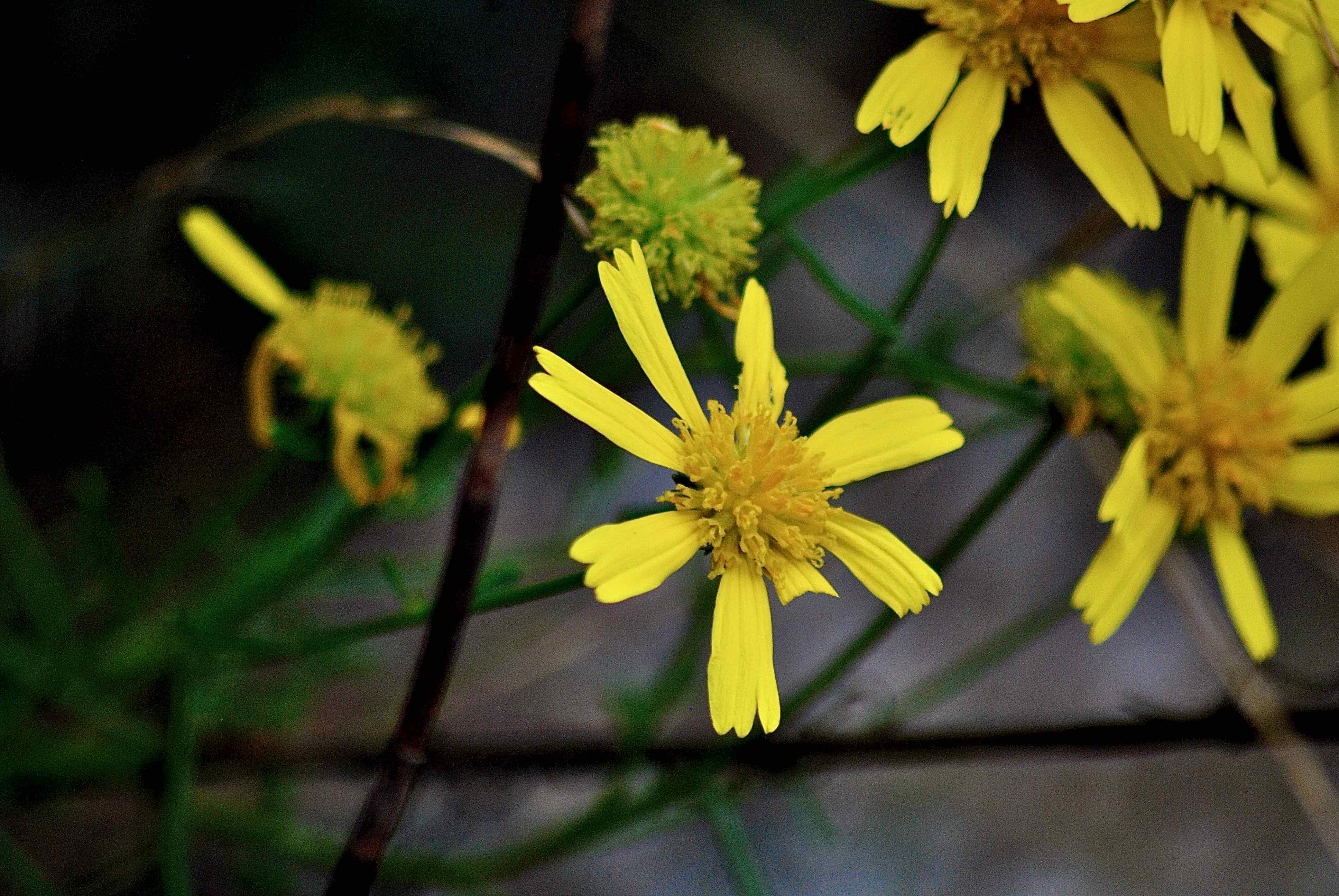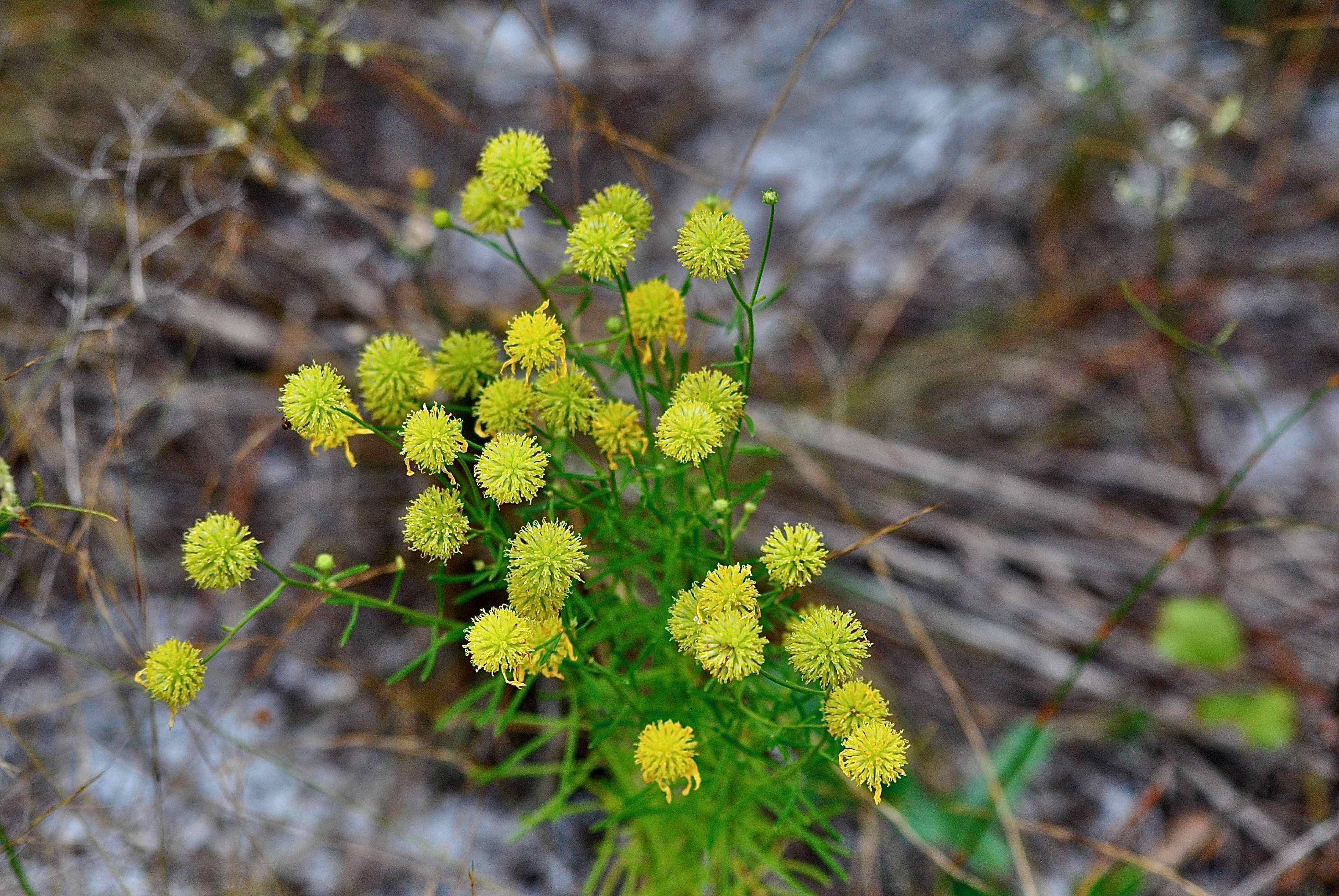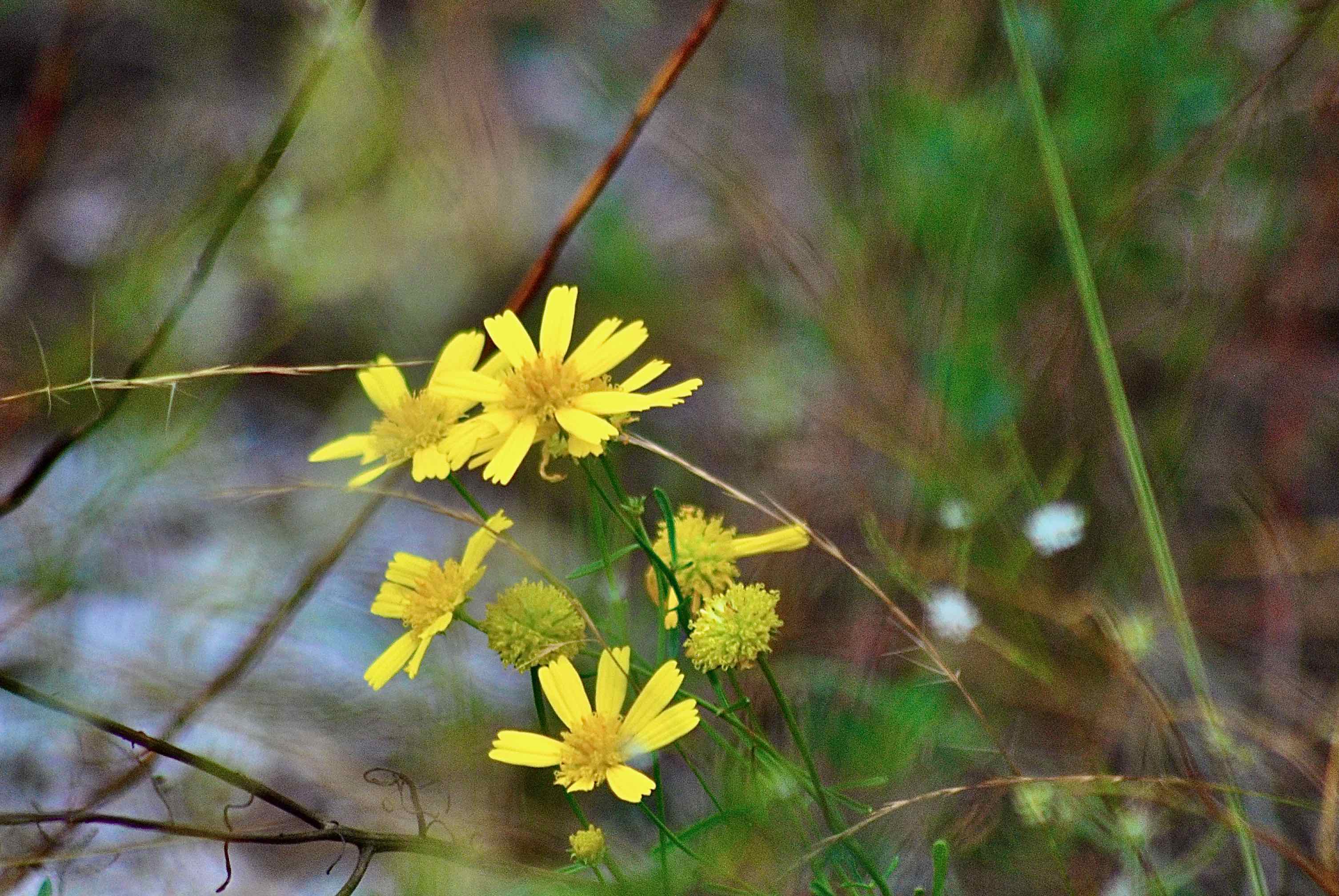
Yellow buttons, photographed at Seacrest Scrub Natural Area, Boynton Beach, Palm Beach County, in December 2015.
This flower brightens up the dreariest of landscapes. Its large, brilliant yellow flowers capture your eyes. Its name: yellow buttons, aka Balduina angustifolia.
To a certain species of bee, however, yellow buttons is more than good looks. It's life itself. Without the plant, these bees, so recently discovered and so rare that they really don't have a common name, would go extinct. Literally. More on the bees in a bit.
Yellow buttons is a native of Florida, found throughout most of the state as far south as Miami-Dade County. Its range also includes Mississippi, Alabama and Georgia. It's considered rare in South Florida by the Institute for Regional Conservation, but it is more abundant elsewhere in the state. It is not listed as either threatened or endangered by any state agency or the federal government.
We've seen some experts call yellow buttons an annual and by others a biennial. We're agnostic on the issue, but it's possible climate and geography play a role, that it's a perennial here in sunny South Florida, an annual in points north where winters are less mild. Those who say it is an biennial say it spends its first year as a rather inconspicuous rossette of leaves, finally unambiguously announcing its presence and blooming in the second year. Yellow buttons bloom in spring through summer and into fall.
Yellow button leaves are long and narrow — angustifolia — like rosemary, except thinner; the plant itself can be two or three feet long. When it blooms, it assumes sort of a lollipop shape with multiple flowers at the top. It's found in dry habitats such as scrub, scrubby flatwoods and sandhills. It requires full sun and does not tolerate drought well.
It is grown by a few commercial nurseries, and is used in restorations, natural landscapes and butterfly gardens. To our knowledge it is not a butterfly host plant, but some butterflies are attracted to its flowers for nectar.
While most butterflies might pick and choose whether they want to nectar on yellow buttons or some other flower that they find more attractive, more sweet, there is this bee that is genetically committed to it. This is Hesperaris oraria, a species of solitary ground-nesting bees discovered on some barrier islands in the northern Gulf of Mexico in the early 1990s. It's so new to science that it has only a proposed common name: the coastalplain hesperaris bee.
Why this bee is singularly attached to yellow buttons remains a mystery, at least to us here at Wild South Florida. There are numerous instance where one species is linked inextricably with another. There is a wasp that specializes in sipping the nectar of strangler figs and only strangler figs. It is the only insect that pollinates the strangler, so both are inextricably linked to each other. But the coastaplain hesperaris bee isn't the only insect that pollinates yellow buttons. In fact, the bee only inhabits one small slice of the flower's range. Seemingly yellow buttons would get along fine if the bee went extinct, but not the other way around.
Yellow buttons is also known as coastalplain honeycombhead. It is a member of Asteraceae, the sunflower family, and one of three members of the Balduina genus found in Florida.
Seacrest Scrub Natural Area



